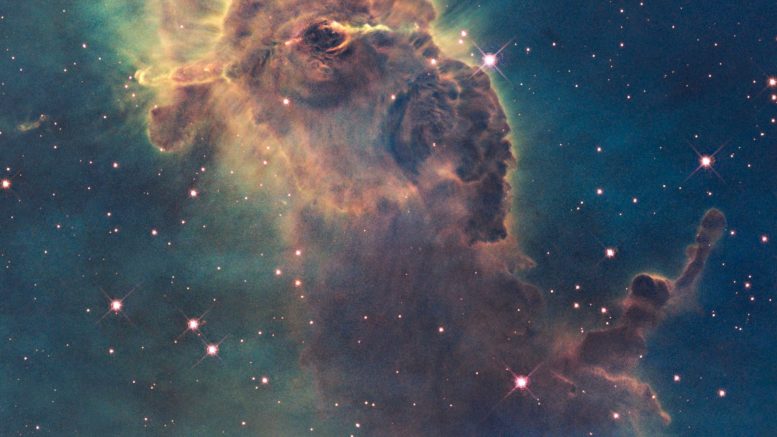A nebula is an interstellar cloud of dust, hydrogen, helium and other ionized gases. The term nebula originally described any diffuse astronomical object, and did include galaxies beyond the Milky Way. This did at one point in time include the Andromeda Galaxy, which at the time was named the Andromeda Nebula. The distinction between galaxies and nebulae has been distinguished properly.
The size of nebulae can vary in size, but most are vast in size that are hundreds of light-years in size. It is worth note that for an observer on Earth viewing with their human eye, a nebula appear larger, but no brighter than observing from close by. Nebula are denser than the surrounding space; however most nebulae are far less dense than any vacuum created on Earth.
Because many nebulae are visible due to their fluorescence caused by embedded hot stars; however, there are some that are so diffuse they can only be detected with long exposures and special filters.
Formation
There are a variety of formation mechanisms for the different types of nebulae. Some nebulae form from gas that is already in the interstellar medium while others are produced by stars. Some are formed as a result of supernova and others are a result of stars, like our sun, that evolve into red giants and lose their outer layers during pulsations over time in a slow fashion.
Types
- Diffuse nebulae
Diffuse nebulae are extended and contain no well-defined boundaries and can be divided into 3 main subtypes: emission nebulae, reflection nebulae and dark nebulae.
Visible light nebulae may be divided into emission nebulae, which emit spectral line radiation from excited or ionized gas.
Reflection nebulae themselves do not emit significant amounts of visible light, but are near stars and reflect light from them.
Nebulae that do not exhibit visible radiation, but could be detected as opaque clouds blocking light from luminous objects behind them are called dark nebulae.
- Planetary nebulae are the remnants of the final stages of stellar evolution for lower-mass stars.
- Supernova remnants are technically a type of diffuse nebulae, but are the shells of nebulae that have gone supernova.

Be the first to comment on "Nebula: An Introduction"